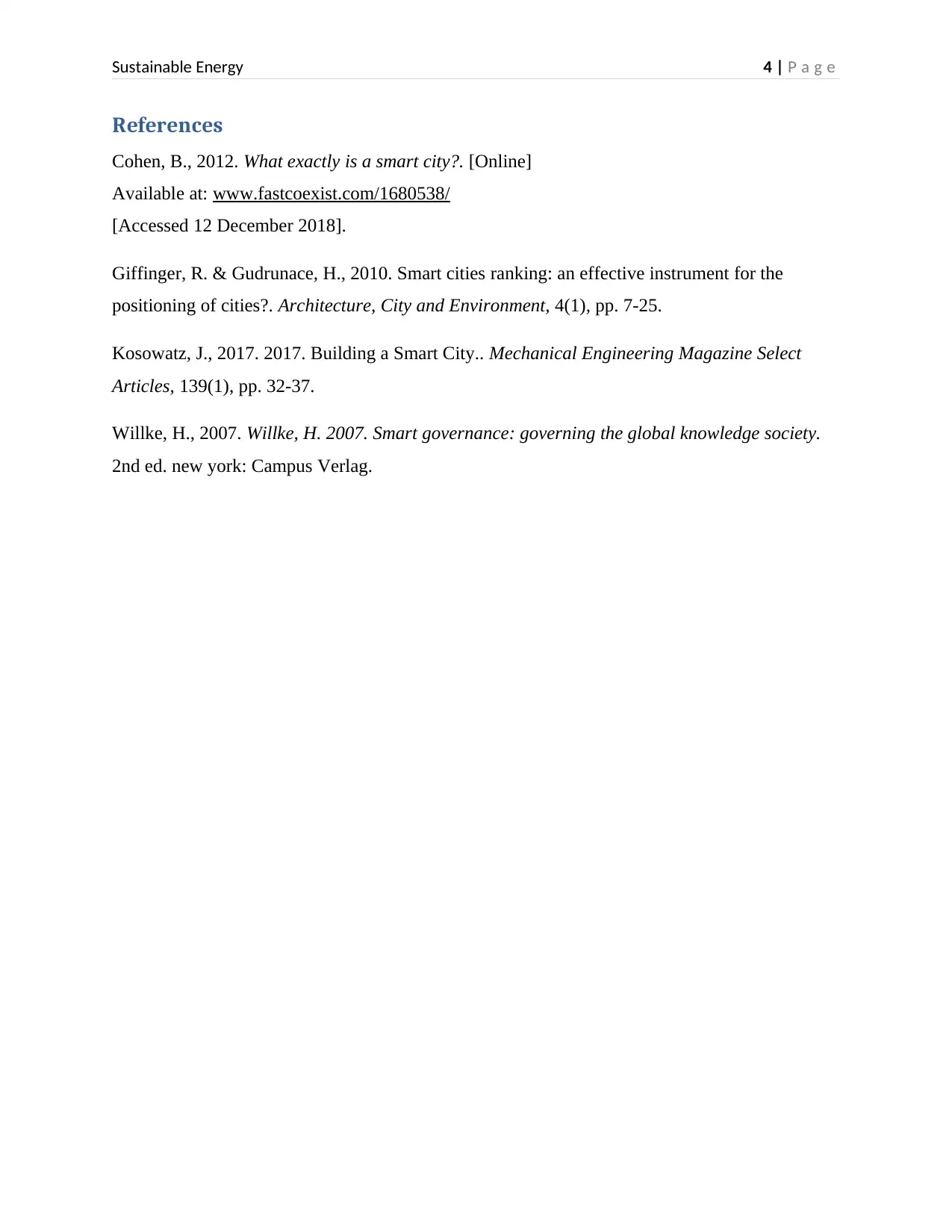University Reflective Report: Smart Cities and Sustainable Energy
VerifiedAdded on 2023/05/28
|5
|783
|72
Report
AI Summary
This reflective report, submitted by a student, delves into the challenges and opportunities of transforming urban areas into smart, sustainable cities. The report begins by discussing the key dimensions of smart cities, including smart people, economy, mobility, environment, lifestyle, and governance, as learned from a workshop. It then explores various attributes of a smart city, such as intelligent, sustainable, and innovative cities, and differentiates between smart/liveable and intelligent cities. The report highlights the application of technologies like the Internet of Things (IoT) in student accommodations and emphasizes the importance of sustainable resources. The author reflects on the integration of technology with human needs, the role of engineers in sustainable engineering, and the need for resource management in smart cities. References to relevant literature are also included. This assignment is available on Desklib, a platform offering AI-based study tools.
1 out of 5











![[object Object]](/_next/static/media/star-bottom.7253800d.svg)